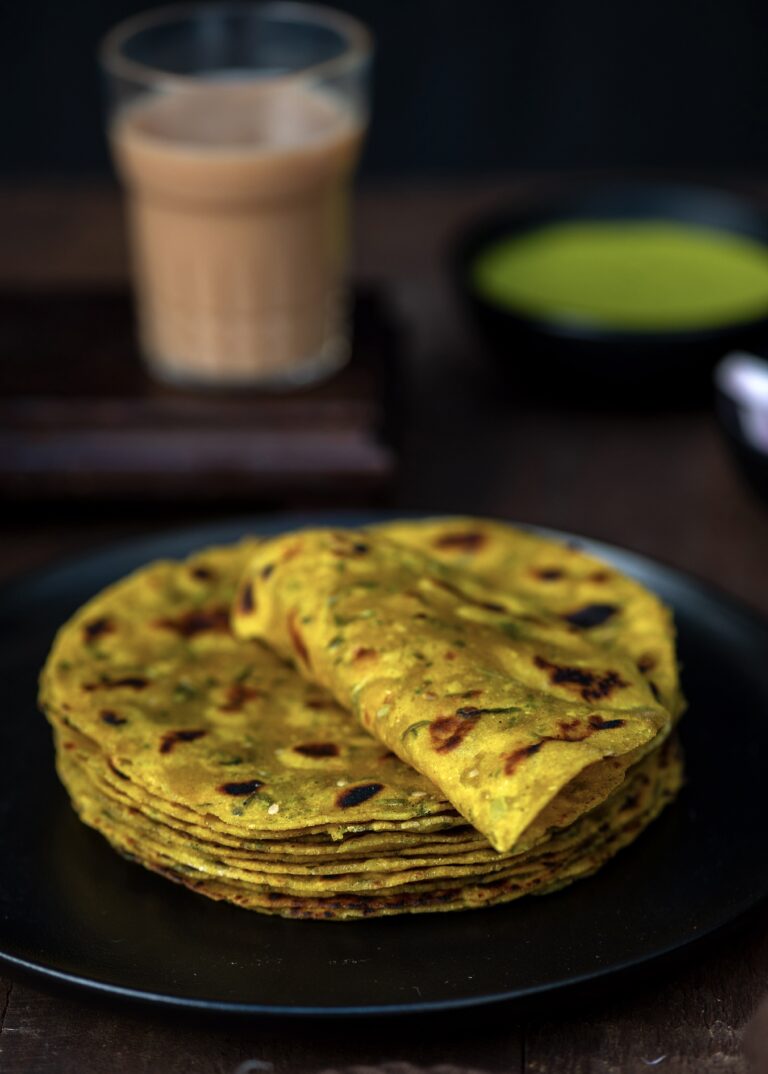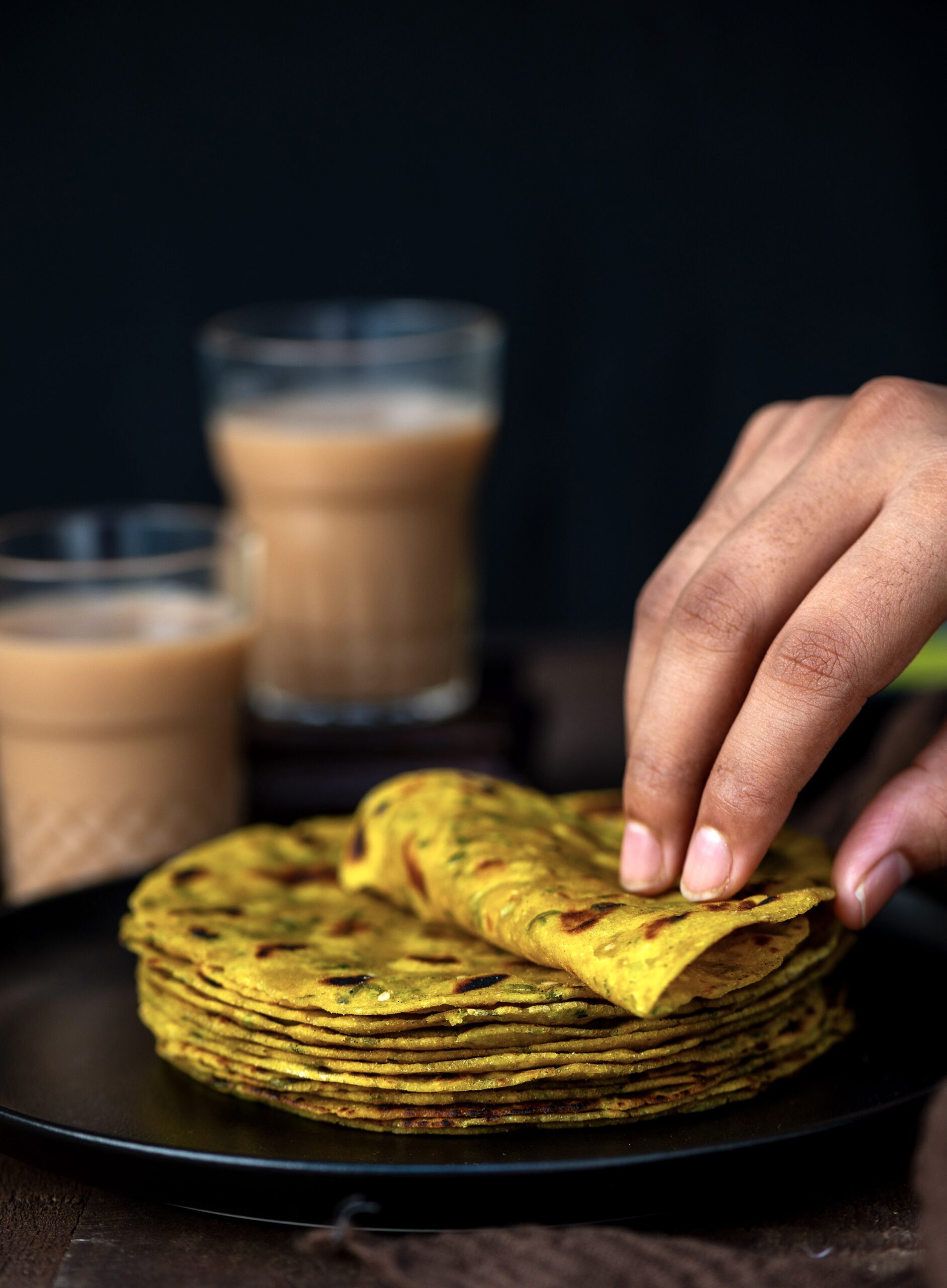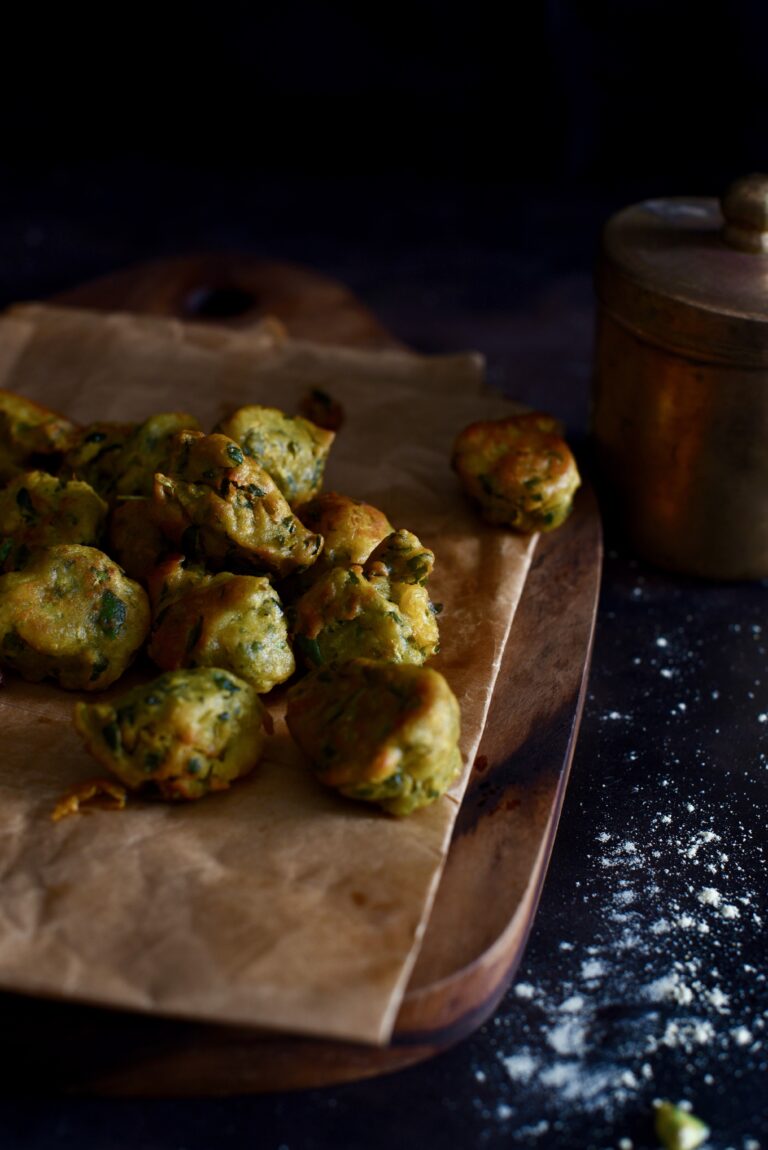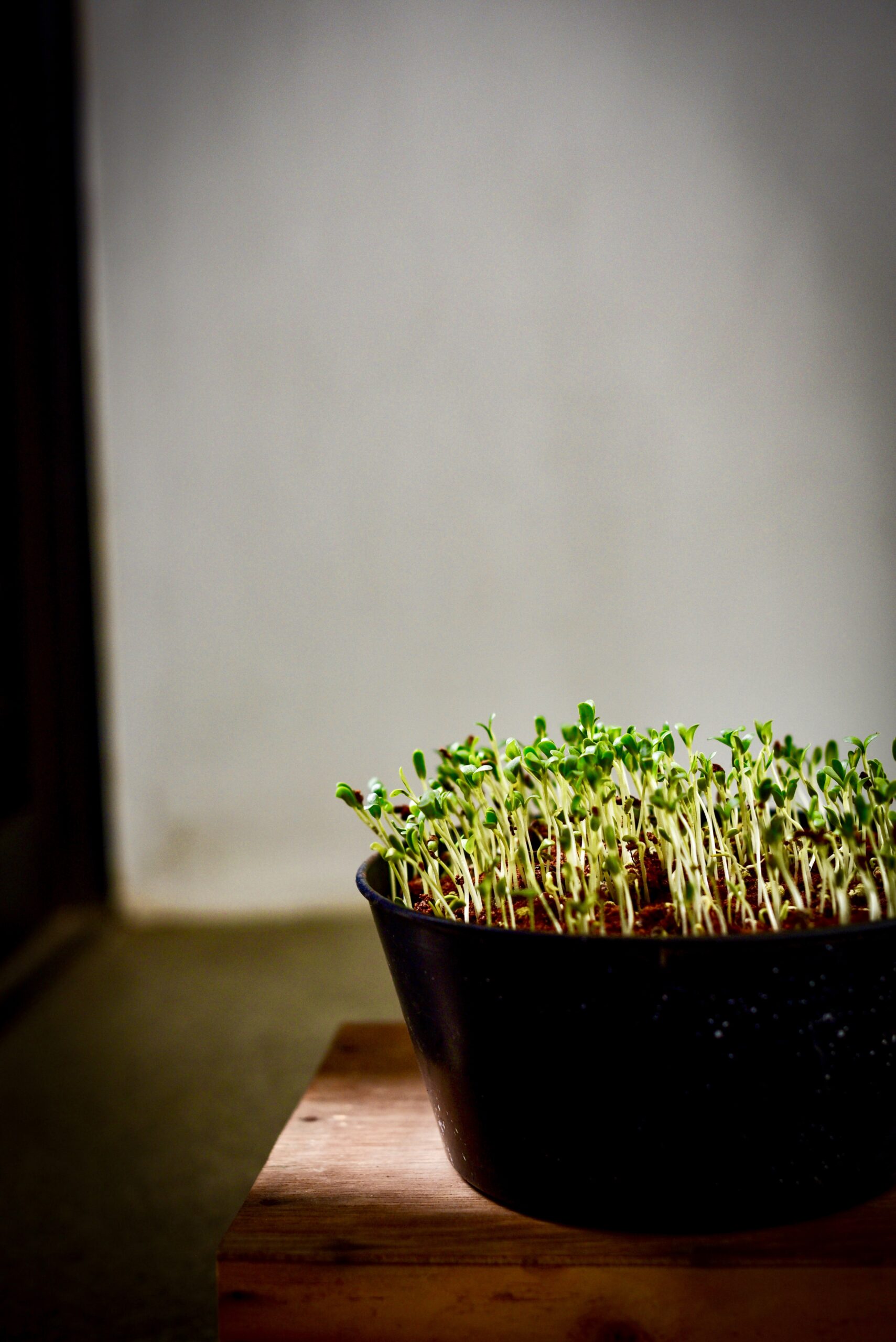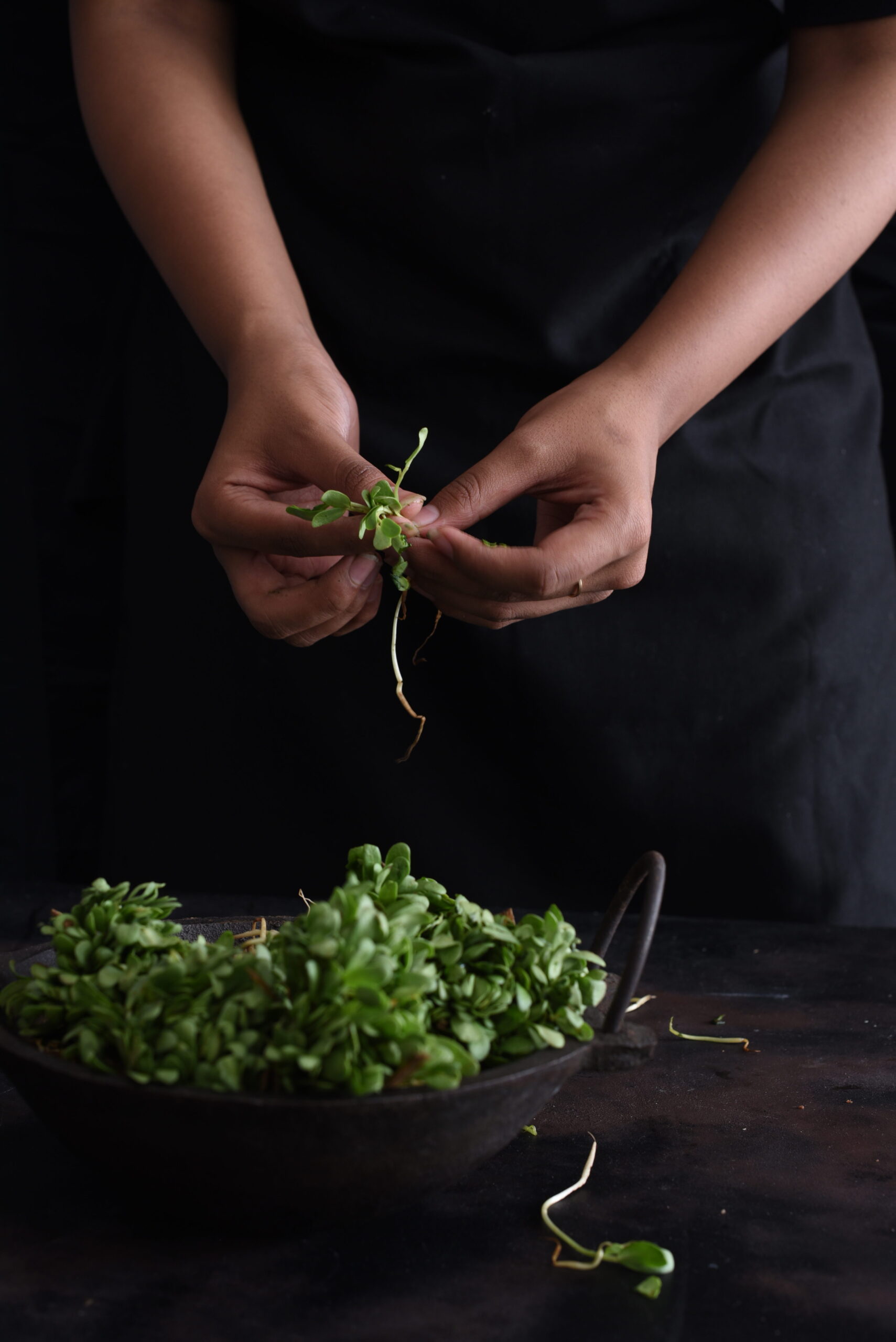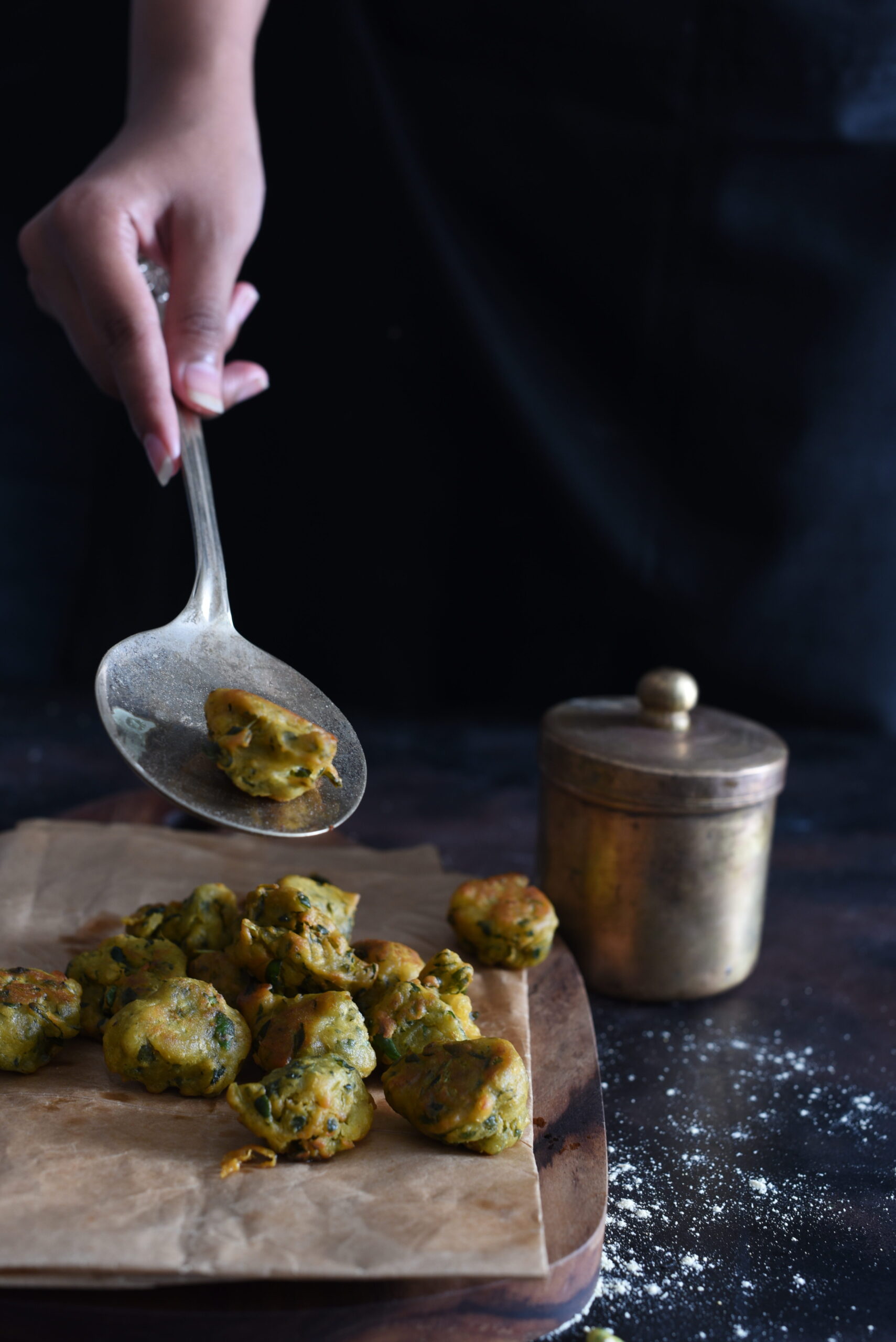On the first Sunday of every month, through my childhood, my mother would make my siblings and I stand in a line and consume a very bitter Ayurvedic powder, which was mixed into a quarter glass of water for each of us. This was a non-negotiable, and we hated it, dreading those Sundays for that very reason. We were forced to drink it up because her claim was that it cleared the stomach of any bugs, infections or worms and contributed to overall good health. I don’t know exactly what was in that powder, which was from a brand that has now long become obsolete, but I presume it contained fenugreek leaves – known in Gujarati as methi – because of the taste, as well as its medicinal potency. It took many years, but eventually I realised my mother was right. I believe her now, and I use methi liberally in my cooking. It even makes its way into a yogurt-based curry known as kadhi. As a result, methi kadhi is both nutritious and tasty.
I have shared a kadhi recipe in the past, and this is a variation that, as mentioned, boosts the healthiness quotient. That recipe contained a few grains of methi, which I also add to various dals, whereas this one utilizes fresh leaves. Fenugreek is extremely beneficial in both seed and leaf form, and is considered by many to be a superfood. A herb that originated in the Mediterranean region, it has been cultivated in India for at least 3000 years and plays a major role in North Indian cuisines. It is known to lower blood sugar and cholesterol, improve digestion and fertility, support the immune system and even enhance skin and hair health.
I mentioned recently that I enjoyed sprouting microgreens as a kid, and methi was among the seeds I used. My sister would also grow hers separately, and we would compare notes. I don’t think we ended up consuming our homegrown herbs, but I do remember the pure joy of seeing the small shoots. Nowadays, I buy the fresh green leaves, but I prepare my own kasoori methi or dried fenugreek powder at home. It is methi season now, and the best place to prepare the powder is at my home in Ahmedabad. The combination of the winter sun and general climate there are ideal for this, whereas Chennai is more humid year-round. The leaves dry up in a day or two. I store them to use through the year, and I make enough for my homes as well as my children’s.
There are two varieties of methi that are generally available. There is one with small, thick leaves that doesn’t grow more than 6 inches, and a bigger, bushier variety. I prefer using the small one when I need fresh leaves, and the bigger one for powdering. While I feel the former is more potent in taste, the yield quantity I require for the powder is better achieved by using the latter.
Kadhis don’t appear on my dining table that frequently, because I prefer to serve dals and lentils daily instead as they contain more protein. In fact, I ate it much more frequently as a child as my father loved it and thus my mother would prepare it very regularly. I myself preferred it to dal back then, and enjoyed it when combined with a plain khichdi. This means that when I prepare any kind of kadhi now, I look forward to it all the more, since the dish was a childhood favourite that has become infrequent.
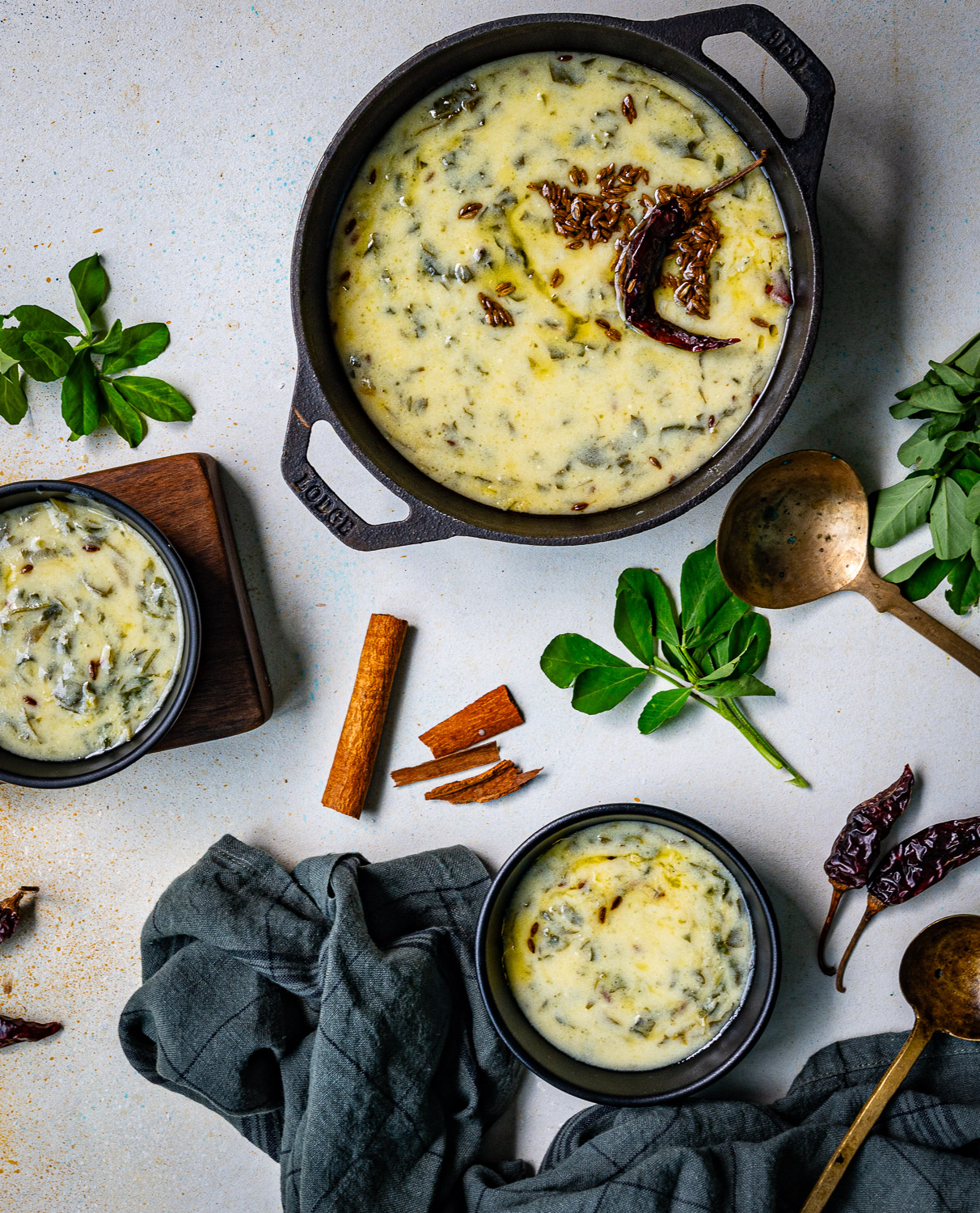
Methi Kadhi
(Yield: Serves 4)
1 cup yogurt
2 tablespoons besan (split brown chickpea flour)
1½ cups water
1½ cups methi (fenugreek leaves)
1 tablespoon ginger + green chilli paste
2 tablespoons oil
2 tablespoons ghee
Salt to taste
½ teaspoon jeera seeds (cumin)
1 cinnamon stick
2 cloves
½ teaspoon asafoetida
Take the yogurt in a bowl. Add the besan and water to it, and beat well until there are no lumps. Set aside.
Clean and finely chop the methi leaves. In a kadai, add the oil and once it has heated, add the methi leaves. Sauté until tender. Add the ginger+green chili paste.
To this, add the yoghurt and besan mixture. Add salt and cook until the raw flavour of the flour leaves and the mixture thickens. Stir continuously as it cooks, otherwise it will separate.
Now, prepare the tempering. In a frying pan, add the ghee. Once it has heated, add the jeera, cinnamon stick, cloves and asafoetida. Pour this over the kadhi.
Your methi kadhi is now ready to serve. As mentioned, it pairs perfectly with khichdi.
While there is an Indian belief that curd should be avoided at night and during winter, I would suggest that even if you follow that custom, the use of methi and besan in this kadhi provide a counterbalance. Don’t deprive yourself of this deliciousness, in any season! I may eat less of it now than I did growing up, but I certainly still do!


